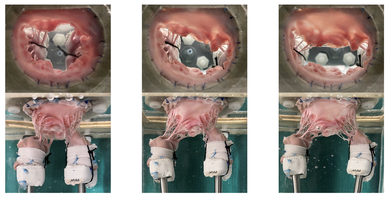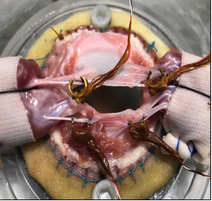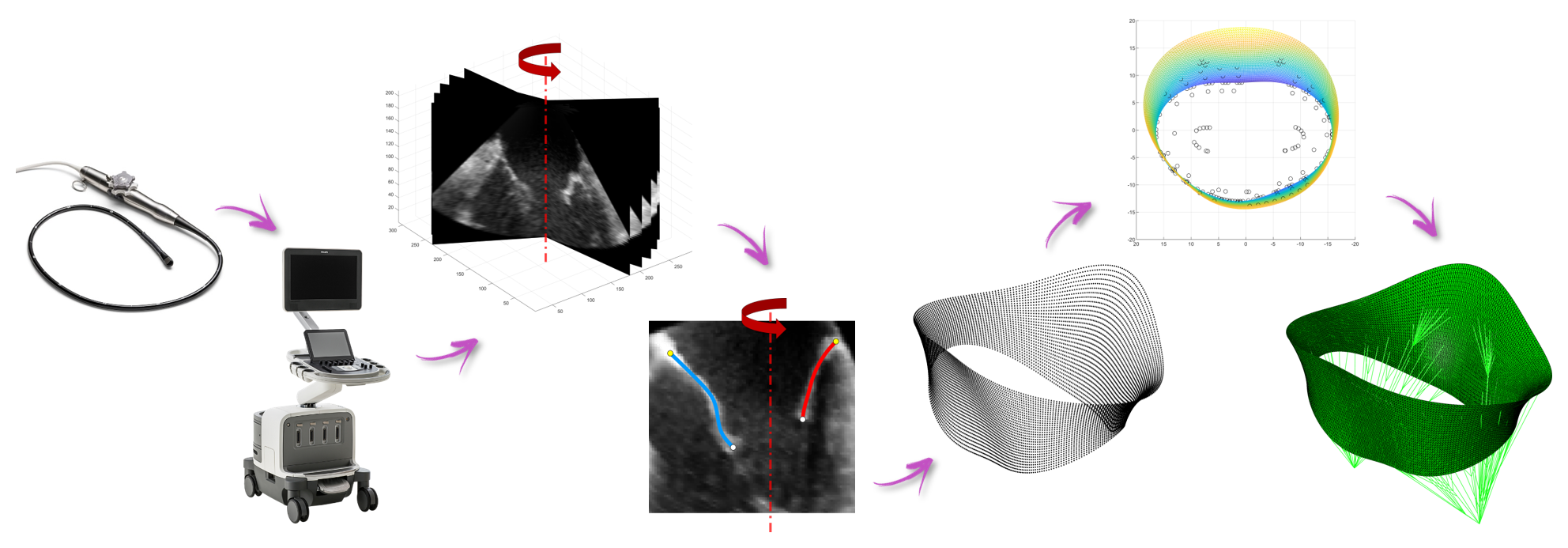Heart Valve Biomechanics and Therapies |
Recent publications |
|
The heart valve subgroup was established in 2010, as the first focus area for our lab. Our overarching goal is to design better surgical and transcatheter repairs for functional mitral and tricupsid regurgitation. Our in vitro platform is a pulsatile mitral and tricuspid valve simulator to study the biomechanics of different repair strategies, to optimize them or test new approaches. Our in vivo platform is a swine model of mitral and tricuspid regurgitation, to study the chronic safety and efficacy of our approaches for further translational to patients. |
|



